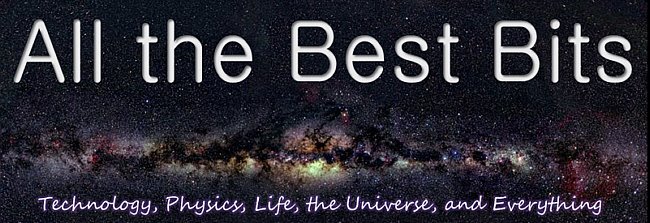Release Your Inner Scientist
Many of you have probably heard me rant from time to time about the fact that science education in the US has become an exercise in endurance to survive boring history of science lectures and rote repetition of cookie-cutter "experiments." I'd even go so far as to call many of them little more than advanced games of Simon Says. "Simon says, now place the loop at the top of the ramp...hey, look at that! It did exactly what the workbook said it would do!"
It is no wonder that US high school science literacy has fallen to the 20th percentile of industrialized nations. (2003 study, 2005 study, a REALLY scary 2006 report with graphs plotted below, and another summary of the same report.)
The solution to this problem, in my mind, is to make real tools, projects, parts, guidance and inspiration available to students in both supervised and unsupervised open access laboratories, for them to perform their own experiments, and build their own projects. In essence, we need to get our students to innovate themselves rather than strand them reading about how other people innovated. And the process needs to start early, in pre-school, through elementary and Jr. high, with increasing complexity and depth throught high school.
 One of my favorite sources of inspiration for this type of explorations was the monthly "Amature Scientist" column that used to be a regular feature of Scientific American. Despite their recent decision to eliminated that column, you can still find the whole archive and a whole set of new projects from the fellow who wrote the column for the last six years here at Dr. Shaw's web page entitled, "The Best Tail-Kicking Science Projects Anywhere."
One of my favorite sources of inspiration for this type of explorations was the monthly "Amature Scientist" column that used to be a regular feature of Scientific American. Despite their recent decision to eliminated that column, you can still find the whole archive and a whole set of new projects from the fellow who wrote the column for the last six years here at Dr. Shaw's web page entitled, "The Best Tail-Kicking Science Projects Anywhere."

A couple of my favorites that just jumped off the page included:
The list just goes on and on. I think I'm going to purchase the latest set myself.
Of course it will help if we can somehow help teachers to become guides and mentors in exploration rather than just lecturers. More on that in later posts.
A couple of my favorites that just jumped off the page included:
- Photograph an ant's brain and nervous system
- Convert an old kitchen blender into a working centrifuge
- Experiment with films only one molecule thick
- Use a hot wire to study the crystal structure of steel
- Measure the electric charge on raindrops
- Study fluctuations in the earth's magnetic field
- Build a video microscope for about $10
- Learn all the secrets of grinding and testing telescope mirrors
- Build, mount and use research-quality telescopes at home
- Search for titanic galactic explosions
- Learn six different ways to fabricate a laser at home
- Make soap bubbles that last for months (or even years!)
- Measure the energy drain on your car
The list just goes on and on. I think I'm going to purchase the latest set myself.
Of course it will help if we can somehow help teachers to become guides and mentors in exploration rather than just lecturers. More on that in later posts.
















No comments:
Post a Comment